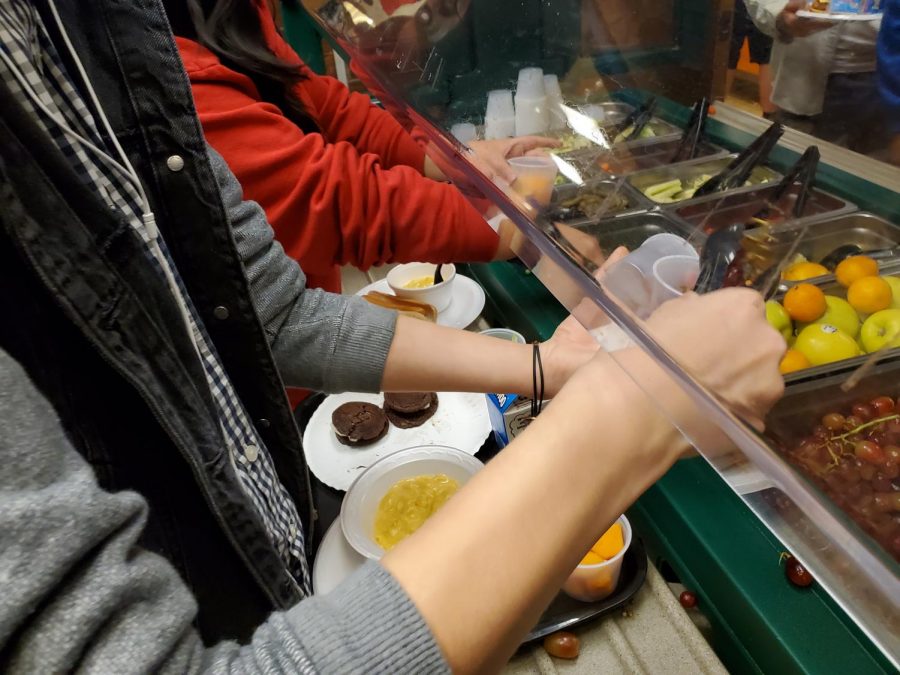Providing lunch for those in need
Students choose which fruits and vegetables to eat with the school lunches.
December 16, 2019
According to Feeding America, 1 in 7 people in the U.S. face hunger every year. 1 in 5 children are lacking proper access to food at some point during the year. When parents or guardians can’t regularly and reliably provide food for their children this is called food insecurity. Even though median average income has never been higher this is still an issue with parents struggling to balance different necessities.
The NSLP is the National School Lunch Program. It provides meals to students each school day, with 1 in 5 children living in a food-insecure household. The NSLP works by giving reimbursements for every school lunch served. In exchange, the schools must serve lunches that meet federal meal pattern requirements.
Gavin Newsom, governor of California recently signed a law that mandates that all students are entitled to a school lunch, whether or not they are able to pay. This is seen as a strong step in the right direction. But we have also seen a series of school districts recently taken steps in the other direction, resulting in embarrassment and humiliation for their students.
Some of the practices used include stamping a child’s hand with things like “I need lunch money”, throwing children’s meals away after it has been served, barring students from extracurricular activities, and threatening to put these children in foster care.
Some say that the only way to truly solve this problem is to offer students meals at no cost. Oregon has taken drastic steps to implement this. The governor signed the Student Success Act, this broadens eligibility for free school meals. In 2020 761 schools in the state will offer free breakfast and lunch to an estimated 345,000 students or 60 percent of all students.





